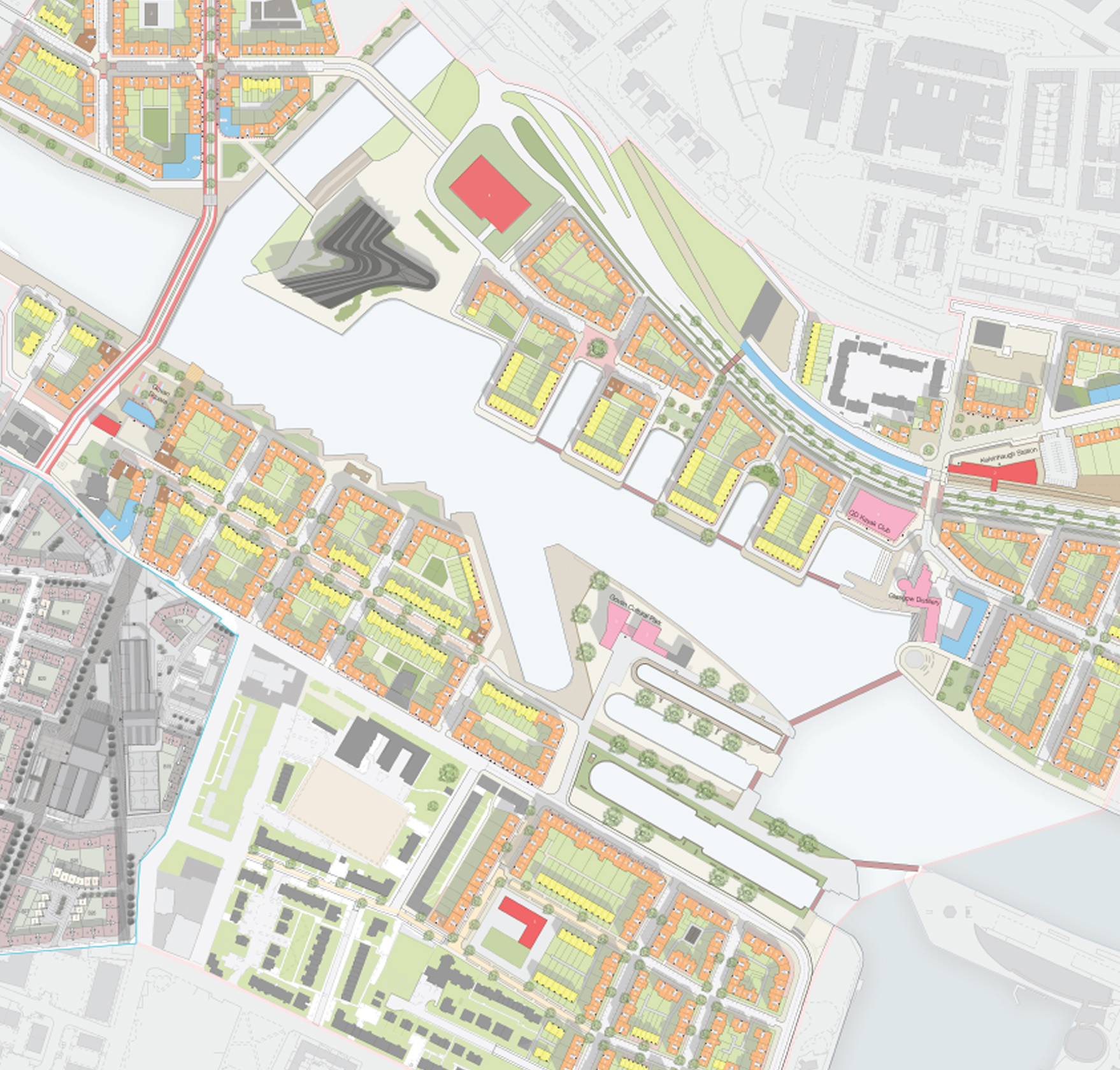CREATING STRONG TOWN CENTRES_Strategic development at Govan, Riverside and the SECC precinct is proposed to create centres for the new urban neighbourhoods which will support Glasgow’s growing population. These centres will have an ‘urban effect,’ raising levels of density, diversity and activity, which will spread across the Clyde waterfront and improve the quality of the city overall as a place to live.
CONNECTING THE CITY _As a wider strategy, travel between the city centres should be easily achievable on foot or by public transport. This will allow for a better flow through the city, more potential activity on all sites and will increase the explorability of Glasgow as a cohesive whole.
OVERCOMING BARRIERS_In order to achieve better connectivity a series of interventions will tackle the major issues: the clyde expressway, the crossing at Anderston station, the river itself and the lack of access to the water. We believe that this is necessary to facilitate the acceptance of the Clyde Avenue as a route, and also as a destination.
WIDER CONTEXT _The interventions suggested are visualised as part of a regional river strategy: reconnecting the Clyde’s many towns to the water, which often enabled their growth, and giving a new post-industrial purpose to the riversides. Population: With the worldwide trend of a rising urban population set to continue Glasgow will need an expected 47,000 housing units by 2028 to support a population increase of 15% by 2037. Glasgow’s housing strategy document 2011 – 2016 states an expected increase in demand for family housing for the period up to 2028. A demand of 25,000 households is expected to be required by 2018 with a further 22,000 required in the decade up to 2028. This is a unique opportunity to give new purpose to the Clyde and create necessary density on the waterfront ‘towns,’ with a target of 75 units per hectare for neighbourhoods.
ENRICHING THE URBAN ENVIRONMENT_The existing strengths of the area will be reinforced by adding stronger urban granularity and using opportunities to make better use of vacant or derelict sites. Green space, civic purpose and diversity of functions will be key to improving the overall quality of the newly urban fabric surrounding the river.
Future Glasgow: “Transforming the Clyde Waterfront” Masterplan Board 1
Future Glasgow: “Transforming the Clyde Waterfront” Masterplan Board 2
Future Glasgow: “Transforming the Clyde Waterfront” Masterplan Board 3
by
Vernon Lee & Scott Paterson


